Here are the the supposed global temperatures of 1900-1978. Any argument you can make about temperatures alleged to rise from there would prompt similar questions about the 1940s and 1960s. Coming to the conclusion that temperatures are about to shoot up in an almost linear fashion would be the express result of the kind of modelling which has seen Wall Street repeatedly blow up.
It’s as crooked as Covid-19 epidemic modelling, in other words.
This was the data they had by 1979, best case. So let me show you the full chart, because what did take place in 1979 was the inaugural Climate Conference in Geneva - the event, where the ‘carbon = heat’ narrative was supposedly established.
Yeah, grab a ruler and extrapolate for yourself.
The conference in question is this one - the ‘WORLD CLIMATE CONFERENCE - A CONFERENCE OF EXPERTS ON CLIMATE AND MANKIND‘.
… and quite simply, you will never guess who arranged it.
But before we go even there, let’s head further back to 1976. Specifically, to the very first hearings in the US Senate. The proceedings can be located here.
And right off the bat -
‘I must say that I find them to be both fascinating and somewhat contradictory. While some scientists are warning that we might be starting off on a longterm cooling trend, making the plunge into another Little Ice Age, others seem to be concerned that the polar ice caps might permanently melt, drowning our coastal cities in the rising seas. Some scientists are concerned that mankind may be inadvertently modifying the climate by polluting the environment with carbon dioxide, particulates, and heat , but there seems to be no agreement as to whether the net result will be to heat us up or cool us off. On the other hand, other scientists seem especially concerned about climatic changes arising from natural causes, but don't seem to have reached a consensus over what these causes are..‘
Now, I’ve engaged in these debates for years, so let’s get one thing out of the way. The chap who commented? This guy. Yeah he’s a democrat.
… and his track record on environmentalism speaks for itself. He convened these hearings, launched climate change research programs, and even established the EPA. If there is one person the environmentalists should have on their dream team, it’s him.
He further established the OSTP, which in 1996 drafted the report leading to Clinton’s global surveillance call, and hence the 1997 Department of Defence GEIS initiative launching.
Now, I could waste hours going through the material here, but there’s really only one person who matters - Bert Bolin -
‘Climate models developed so far show that an increase in carbon dioxide in the atmosphere would result or might result in a warmer climate for the globe as a whole…. It must be emphasized very strongly that the model used for this computation, even though it is probably the most advanced one that has been developed anywhere in the world, is still a rough model of the atmosphere, the oceans and what else is of importance for the climate of the earth. Even if the uncertainty is large, Manabe's result is most remarkable. It seems to me not permissible to gamble with the climate of the earth, as we would be doing in not taking any notice of this important finding.‘
Uncertainty. Guesswork. Hope. Models; rough ones.
‘Green plant life extracts carbon dioxide from the atmosphere in large quantities. If CO2 is increased, can we not expect the plants to take more out and thereby restore some balance?…
In principle you are absolutely right, in that all plant life depends upon the availability of carbon dioxide in the atmosphere… If we now added an amount to this system that is 5 to 10 times as great, it is unlikely that the plants could really absorb a major fraction of this. They would, I suppose, be able to grow more vigorously…
… They would absorb some, but not 5 to 10 times the amount?…
Surely. But there is another much more serious concern. That is that we are affecting the plant cover of the Earth in other ways, whereby we are probably decreasing the amount of carbon in plants all over the world. The present activities of cutting down trees and reducing the extension of forests, not the least in tropical regions, may indeed be contributing to an increase of carbon dioxide in the atmosphere that may not be as large as the harm that we do by burning fossil fuels, but which might not be negligible.‘
It’s a fascinating exchange, because Bolin acknowledges that carbon dioxide will lead to faster plant growth, so consequently, starts talking about deforestation and other topics which really are secondary in the discussion; and this, using words such as probably, may, may, and might, all of which indicate that he doesn’t actually know.
‘Mr. WINN. Have there been any controlled research projects in which plants have been flooded with carbon dioxide?
Dr. BOLIN. Yes ; there have been many experiments in greenhouses, and there is no doubt that there is an increased growing capability in plants.
Mr. WINN. But they can only absorb so much.
Dr. BOLIN. Yes; there are limitations, but we are, I think, rather far from them with the present concentrations. ...
Turning to carbon dioxide, we need to know more in order to be able to forecast what the most significant processes will be in the future, to understand better the way the oceans take up the carbon dioxide, and how this carbon dioxide in the ocean water affects the sediments.‘
They know virtually nothing, in other words. Apart from carbon dioxide make plants grow. That one, they’re pretty sure of. Incidentally, it’s the same fact that is repeatedly mocked by contemporary ‘scientists’, so make of that what you will.
And finally, as for the carbon dioxide ‘consensus’…
‘.., when somebody asks me what I think about the future climate, I usually say that the best way of showing that you are not a capable climatologist is to try to make a forecast. Nevertheless, if you ask me, I am more afraid of an increase in carbon dioxide and the heating that might go with it. But this is my personal opinion as of now, and I think maybe my first statement should be considered more important.‘
… at this stage, it’s merely his personal opinion.
So with this in mind, let’s head back to the 1979 conference, and let’s first have a quick look at what they discussed at the event; public policy, human activities, water, health, agriculture, land use, forestry, fisheries, and the economy. And already there, the oddities are starting to turn up. Because, leading up to the conference, no firm conclusions were arrived at, yet, not only do they agree with the narrative, but they already discuss the implications in a host of other fields, including public policy and the economy. And some of these papers are remarkably long, and would have taken quite a long time to even put together.
In other words, the conclusion had almost certainly already been arrived at before the conference was called. It was a conclusion in search of a concensus.
The first paper is titled ‘Climatic Change and Human Strategy’, and is penned by E. K. Fedorov, of the Soviet Union. In the context of the conference, this document is important, as it’s an overview paper. Consequently, it clearly set the tone for all following papers. And again - in other words - they clearly collaborated behind the scenes, at a time where even the casual exchange of information in and out of communist nations could take a while.
Ultimately, the paper leads us to ‘A desirable strategy for mankind‘ -
‘Climatic changes will inevitably occur in the future. They will often be significant and may become irreversible in the decades immediately before us. They may be local, regional or global in their scope.‘
… on the back of the first temperature chart above, a certain level of guesswork is present here.
‘It is consequently essential that we develop a strategy: that we plan a set of long-term actions which will enable man to avoid the adverse consequences of possible climatic changes.‘
… ie, in the few years between 1976 - where they knew virtually nothing - and 1979 - when the conference took place - not only had they arrived the ‘consensus’, but they had in fact speculated about potential impacts, and even done an initial plan to dodge the worst ones! Which is just plain ludicrous.
‘Several economists and sociologists have recently discussed these questions in a series of papers. One such is that written by a group of social scientists led by the well-known American economist Laszlo. This examines the objectives established by different countries of the world, by national governments, various public groups, international organizations, religious bodies and the like.‘
… Laszlo, you say?
Let’s just check the references; yes, there he is. Goals for Mankind, by Ervin Laszlo. Right about Limits to Growth by the Club of Rome.
Head over to Amazon, and you’ll discover that… this also is a Club of Rome report.
In fact, Ervin Laszlo launched the Club of Budapest.
… and pop over on Wikipedia to further see that he’s a ‘systems analyst’, and in 1984 led the General Evolutionary Research Group, whose aim was to -
‘… explore whether it might be possible to use the chaos theory to identify a new general theory of evolution that might serve as a path to a better world‘
We are talking hard, hard, hard left here, and that under the Iron Curtain.
Returning to the paper by Fedorov, it continues -
‘It is, for example, often suggested that fuel and energy use should be reduced in order to prevent the increase in the C02 content of the atmosphere or increased carbon dioxide absorption by the biosphere. Restriction of energy use is also recommended in order to preserve the planetary heat balance, etc.‘
… in spite of no noticeable pattern yet having emerged…
‘The possibility of climatic changes is only one of the so-called "global problems'' that affect mankind. Others include the provision of adequate food for the world's population, reduction of the still-increasing gap between developed and developing countries in economy, technology and other fields, the provision of energy, the rational use of water resources, the use of oceanic and space resources, and so on. Scientific publications increasingly reflect concern for such problems. It is essential that all scientists who are involved in such matters arrive at the conclusion that concerted action by many countries is necessary for these problems as a whole and every particular problem to be solved adequately and comprehensively on a global scale.‘
… and here come all the other marginally relevant topics, like ‘use of oceanic and space resources’, and ‘increasing gap between developed and developing countries’. This isn’t really about climate at all.
‘The actions that have been recommended vary. For example, in the "Limits to Growth" paper by Meadows' group it was believed essential to put an end to continued expansion and growth.‘
And there’s the full reference to Club of Rome, and Dennis Meadows.
‘Tinbergen, it may be noted, also mentions "decision-makers'', whose agreement would enable the desired reconstruction of the world order. He considered that "the decision-makers" are national governments, international organizations (primarily the UN) and multinational corporations. However, neither Tinbergen nor the other authors appear to be interested in the real purposes of the agreement and the possibilities open to "decision makers".‘
Then we have the United Nations, corporate giants, and the various goverments working in national capacity, implementing the plan… of reconstructing the world order., and let’s pop back to Laszlo above to complete the picture here -
‘Laszlo is forced to draw what to us is the obvious conclusion that the real goals, which countries have in regard to economic activity by their governments and people, exist within socialist countries which plan and shape their development.
In capitalist countries the notion of a goal is absent; there are only desires for further development, and these vary among different organizations and public groups. Not surprisingly, there are no clear goals established, nor ways to achieve them, in the case of mankind as a whole. Laszlo calls for the development, adoption and pursuit of some rational objectives for all mankind, which he calls "a revolution of goals".‘
In other words, all nations must stick to the same plan, and whoever controls that plan, controls the world. Global governance.
Which isn’t possible in the capitalist nations. Golly, I wonder what the 1984 ‘General Evolutionary Research Group‘ was about.
I could go through each paper, but life is short. Consequently, we skip to page 154, and another paper by a Soviet - ‘Monitoring Data Relevant to Climate‘;
‘Monitoring the environment is understood as a comprehensive programme aimed at the observations of the state of the environment as a whole… the whole climatic system consisting of atmosphere-ocean-cryosphere-land surface-biota… climatic data essential and should probably have the highest priority.‘
Yeah, it’s global surveillance, which then drags in GEMS (Global Environment Monitoring System) soon afterwards -
‘The establishment of a data collection system dealing with past climates may also be referred to as monitoring… assessment of global atmospheric pollution and its impact on climate is acknowledged by UNEP as one of the main purposes of the Global Environment Monitoring System‘
Oh, how lucky. How fortuitous that this initiative launched just a few years prior, with the starting point being two SCOPE reports from 1971 and 1973.
Now skip to page 164, and it clearly states -
‘Role of satellites in climate monitoring‘. I have documented global surveillance probably most of all, here’s how it ties into biodiversity… or claims thereof, anyway.
Finally, satellites are to be used for data transfer as well.
The next paper of interest is on page 170, and it’s by… RE Munn. And if that name appears familiar, it might be because he worked on both SCOPE reports leading to the Global Environment Monitoring System.
What an amazing coincidence.
The paper is more of the same, and there’s a lot of material here, so I’ll keep it brief -
‘New doubts about carbon cycle models have arisen in the last several years… it cannot be said that carbon cycle modelling is on a firm footing.‘
What I do however find of interest is the complete absense of mention of GEMS, which Munn very much worked on. It would appear somewhat relevent, no?
Next up, page 313, and a paper titled ‘CLIMATE, HEALTH AND DISEASE‘, by Wolf H. Weihe of the World Health Organisation. This paper is 56 pages, and would have taken a fair while to write.
It drags in the International Biosphere Programme, which we’ve seen before; another ICSU initiative. In short, it’s about the effects of climate on man’s well-being, where this explicitly drags in all the determinants of health, which - at best - are derivatives of health itself. These include sociological, economical, political, and religious factors. Yes, really.
It carries on, outlining climate being a cause of disease, moves to investigate the public health aspect, communicable and non-communicable diseases, and even drags in the organisation of health services and the provision of vaccines.
Yes, really.
Finally, transmitted diseases are outlined, including those crossing from animal to humans. I think we’ve been here before.
We then head to page 369; ‘GLOBAL ASPECTS OF FOOD PRODUCTION‘, which fails to account for an increased agricultural output from higher levels of co2, yet bangs every drum of doom imaginable. A few quotes -
‘These calculations indicate a theoretical production potential of 49 830 million tonnes of grain equivalents per year… the postulated production potential is nearly 40 times the present level of production. In other words, we are now exploiting only 2.5 per cent of the absolute maximum potential. It is of course not possible to use all the available land only for growing food crops. The maximum production from the approximately 65 per cent of the cultivated land now used for cereal crop production, could be 32 390 million tonnes or 30 times the present production.‘
Yes, in spite of them outlining a hypothetical increase of production to the tune of 30x, they are still banging the drum of fear. Oh, and in the conclusions, we get a hint as to why -
‘The finite resources of the "Spaceship Earth" (to quote Buckminster Fuller) can provide food, clothing and shelter for all provided the resources are conserved and utilized by all countries in a manner that will generate synergy and symbiosis‘
Yes, really.
Buckminster Fuller further drags in the Collegium International. This is all on the concept of ‘systems theory’, in short, which also describes the Club of Rome’s Circular Economy as well as the Ecosystem Approach in general.
'Buckminster Fuller wanted to place responsibility ... in the hands of the designer, whom he called on to think in a “comprehensive“ and “anticipatory“ way. ..., would enable “world planning” in the “total communications system of Man” on Spaceship Earth'
Very much global governance.
The final paper I can… be bothered with covering from the absurdly biased conference, establishing ‘the consensus’, is this one from page 652 - ‘CLIMATE AND ECONOMIC ACTIVITY‘. And the only reason I include it, is because it’s the exception to the rule -it essentially outlines the colossal uncertainties present -
‘While direct scientific evidence of global climatic change induced by emission of C02, NOx and other by-products of industrial activities is not yet obtainable, there appears to be sufficient indirect evidence through experiments and historical observation to suggest that these emissions could significantly alter world climate. It has been proposed that the net effect in 50 to 200 years may be a global warming of several deg C with perhaps greater rainfall. However, the possibility of a net cooling effect when all potential stratospheric pollutants are considered cannot be ruled out. It is also the purpose of this paper to examine the potential economic costs and benefits of man-induced and natural global climatic changes over the next 50 to lOO years.‘
Right. It might be warming. Or cooling. Or it might significantly alter world climate. It’s dart throwing, little else.
‘Given the inherent uncertainties and possibilities for large errors in measurement, how should the stratospheric pollution problem be analysed from an economic perspective?
There are large uncertainties (both in sign and magnitude) in the climatic effects of various levels of emission into the stratosphere, of oxides of nitrogen, sulphur oxides, particulates, carbon monoxide, and water vapour and their effects on surface climate but there appears to be some degree of concensus on the temperature effect of increased C02 in the stratosphere. Whether this will be counter-balanced by other types of pollutants and to what degree is not known with any degree of accuracy. Some changes may involve irreversibilities in the natural environment, although no substantive evidence of this is now available.‘
There is absolutely no evidence. The only ‘evidence’ appears to be the ‘consensus’, and even that is typically produced through experiments, meaning it’s only a partial understanding of the whole picture.
‘There are extremely large uncertainties in the translation of tropospheric climatic changes into quantitative biological effects.‘
But how this ‘consensus’ translates into biological effects… who knows?
‘There are very high uncertainties as to how social communities and the economic system adjust to large-scale climatic changes or even to long-term but small climatic shifts in the biosphere.‘
And how those biological effects translate into ‘well-being’… they don’t know either!
‘None of these substantial uncertainties is likely to be reduced to accurate estimates of effects in less than one or two decades.‘
… and they don’t even know when they will know.
‘The essential problem is that the relationship between predicted cause and effect is extremely uncertain at this time‘
Even if they knew carbon dioxide translated - curiously - into an almost linear annual increase, they still didn’t know how that impacted ‘biodiversity’, and how that in turn would impact ‘human well-being’.
It’s compound guesswork.
What happened following this conference was, in very brief, ICSU (them again) organised a 1985 conference, with SCOPE summarising the findings. And these found their way to Brundtland, and the 1987 landmark report; ‘Our Common Future’.
The conference further led to the launch of the AGGG; an early version of the IPCC. Yet again, the ICSU were involved, and as were they, as Bert Bolin - AGGG member, and SCOPE report author - was appointed to the chairman position with the IPCC. Yes, the same Bert Bolin who in 1976 practically outright stated that very little was known on the topic.
The two first reports of the IPCC released in respectively 1990 and 1995 then led to the UNFCCC, and the Kyoto Protocol in 1997.
But ultimately, as the UNFCCC identified the problem - carbon dioxide, primarily - the other part of the ‘solution’ offered in 1992 was hiding in a parallel document.
The Convention on Biological Diversity.
… and the CBD eventually led us to billionaires funding -
But that, too, is simply a coincidence, and never you mind UNESCO Biosphere Reserves with fresh water, timer, and blue carbon credits currently being monetised through the GEF. Besides, I’m pretty sure they do that to protect you.
And also never you mind that they’ve consistently front-run all these investments, even used your money for oversized returns - and that their involvement in fact was predicted by the paper above, which looped in Laszlo and the Club of Rome.
Oh wait, I almost left you on a cliff-hanger. So who did incidentally arrange the invitation-only 1979 event, which really was rather impressively biased?
Oh, them again.







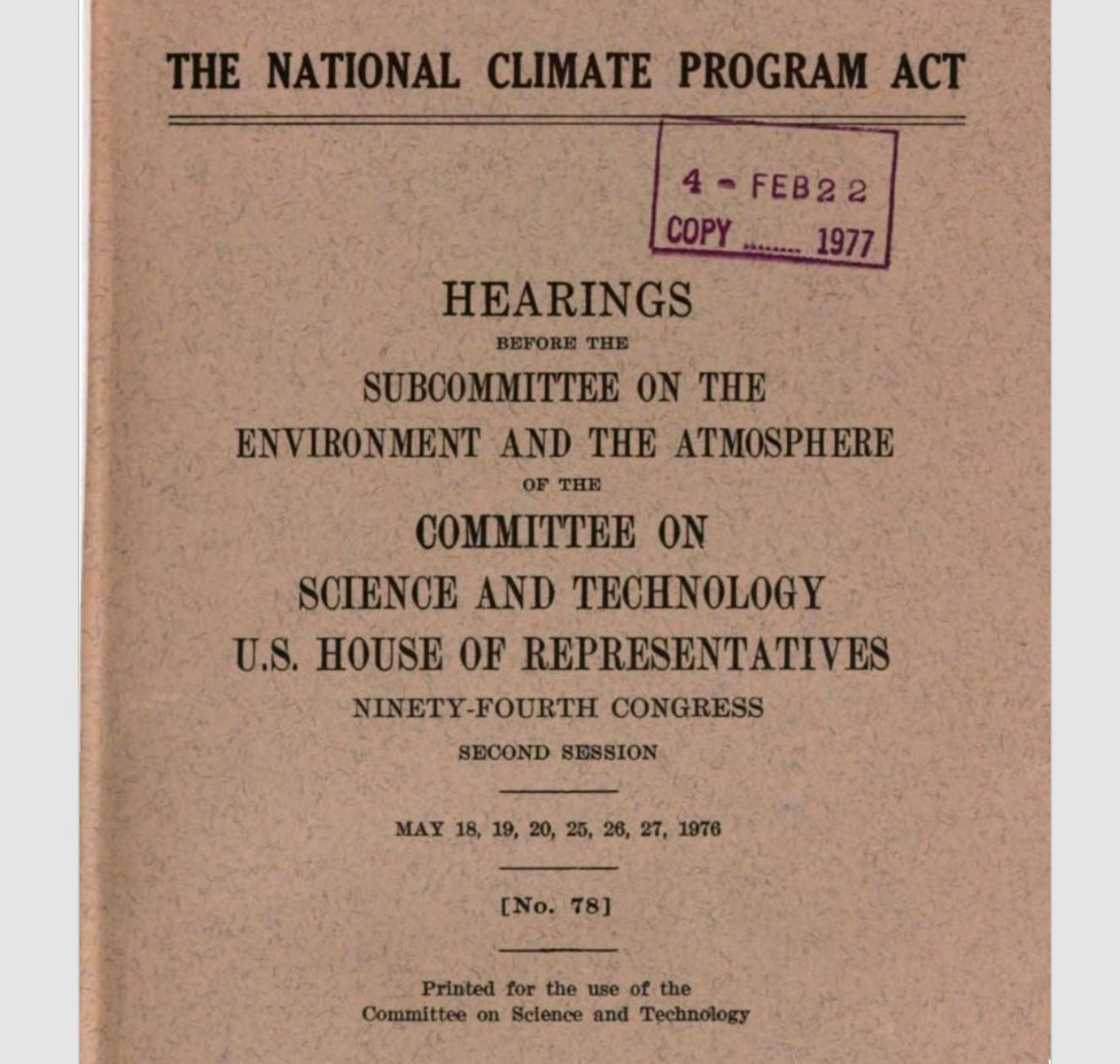
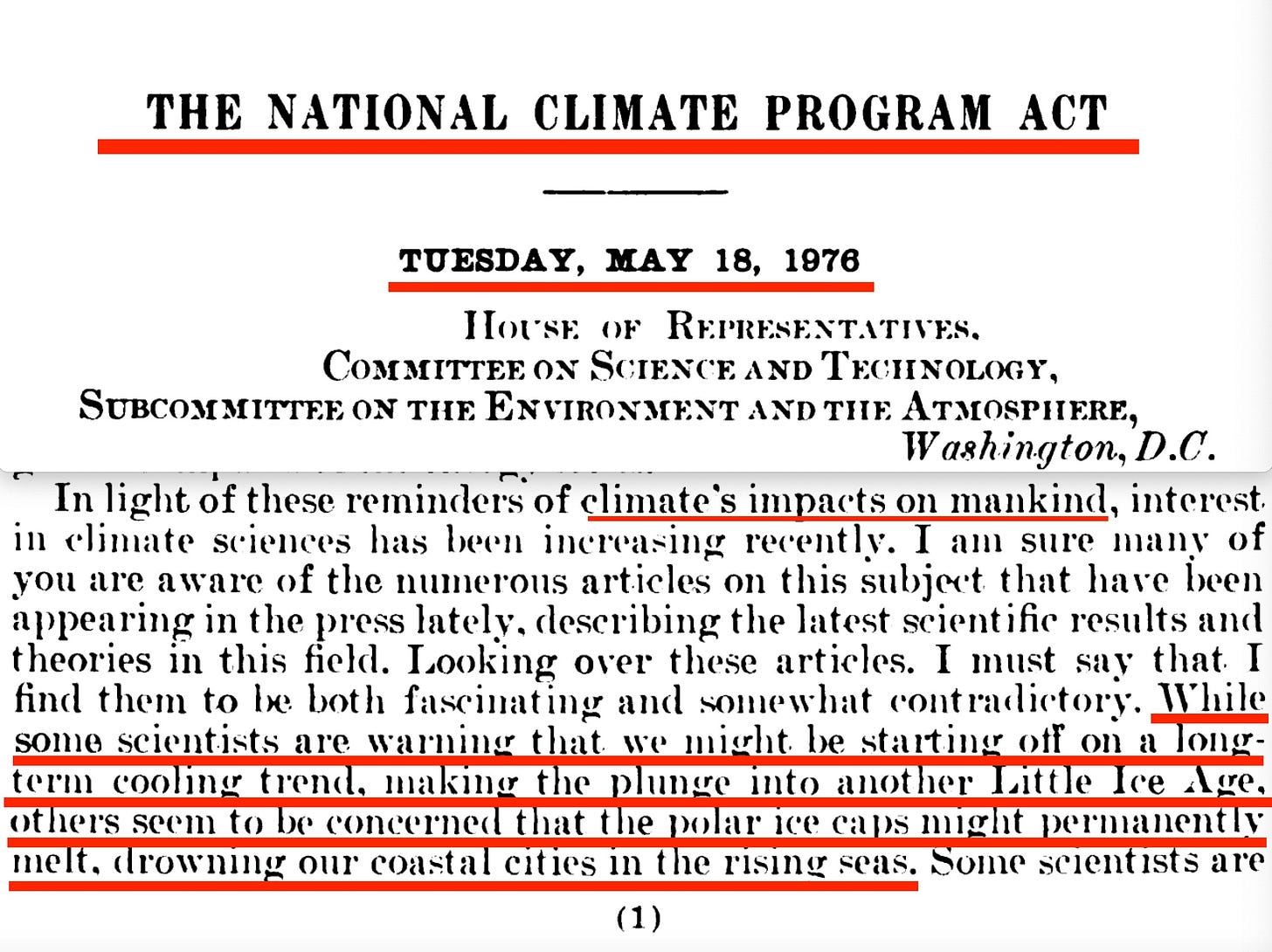



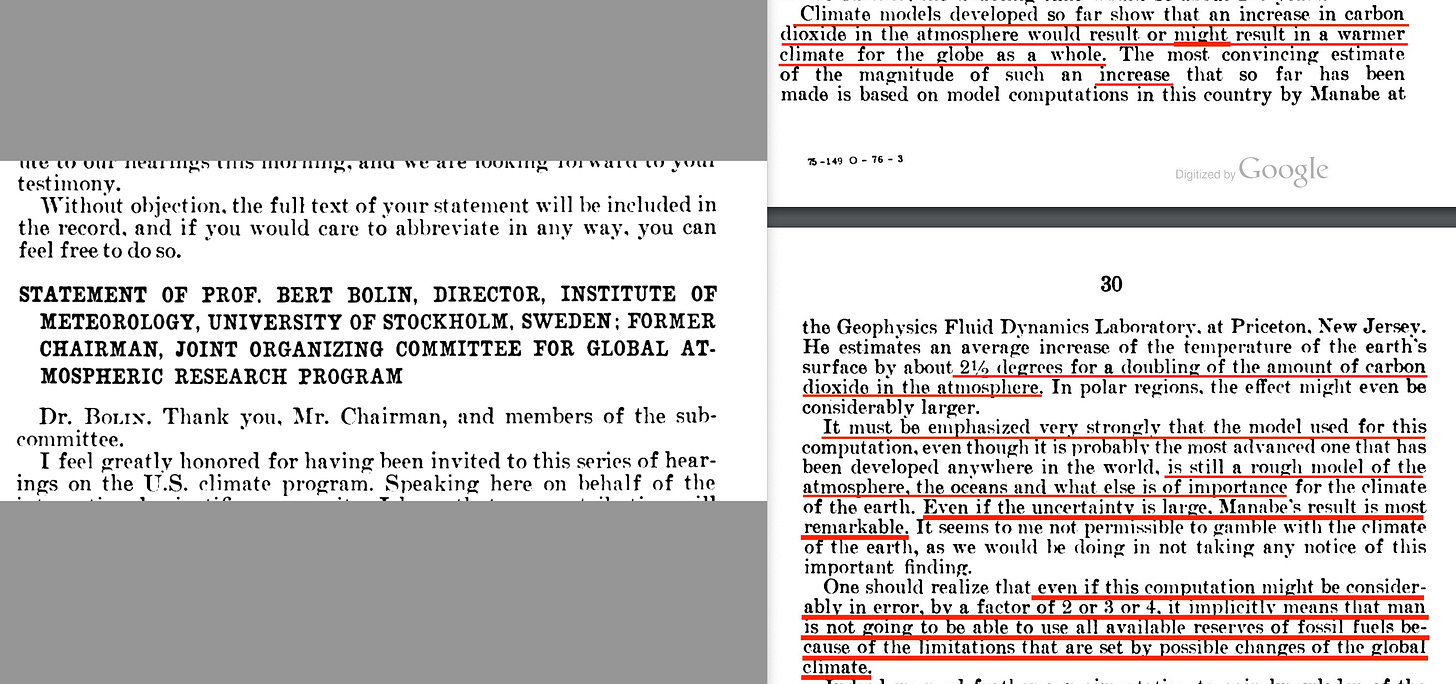

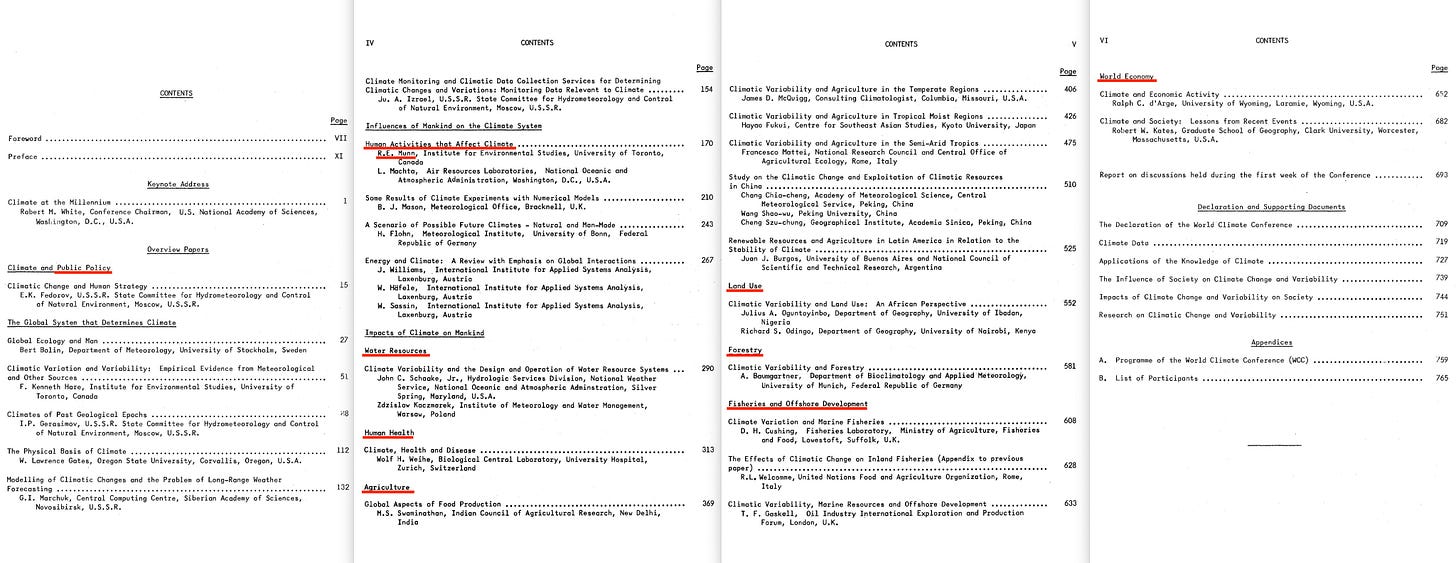




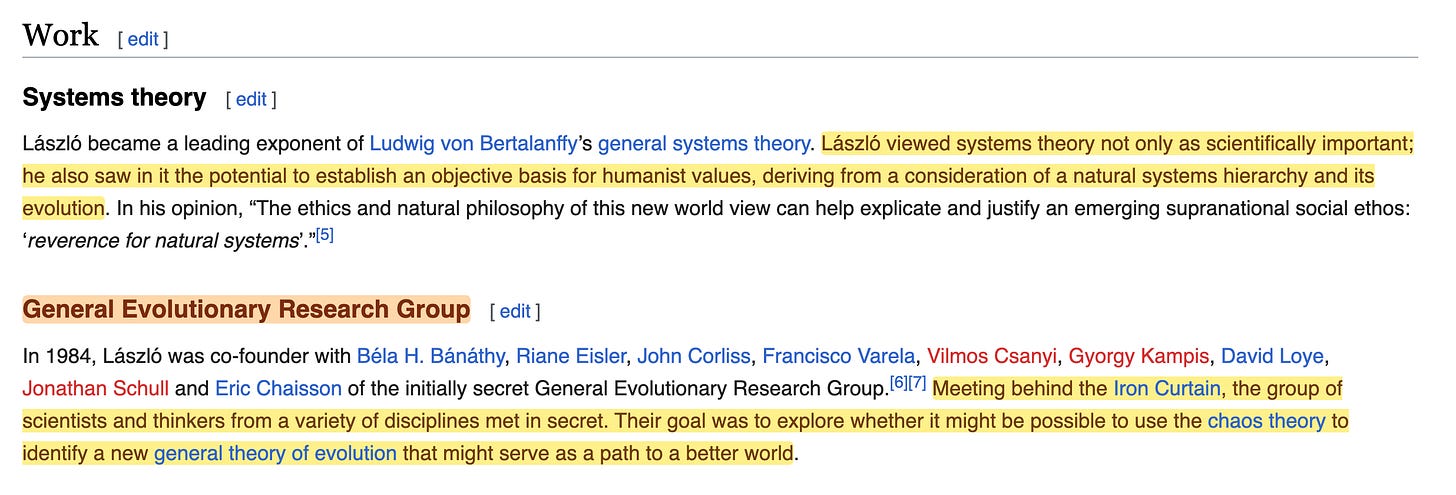







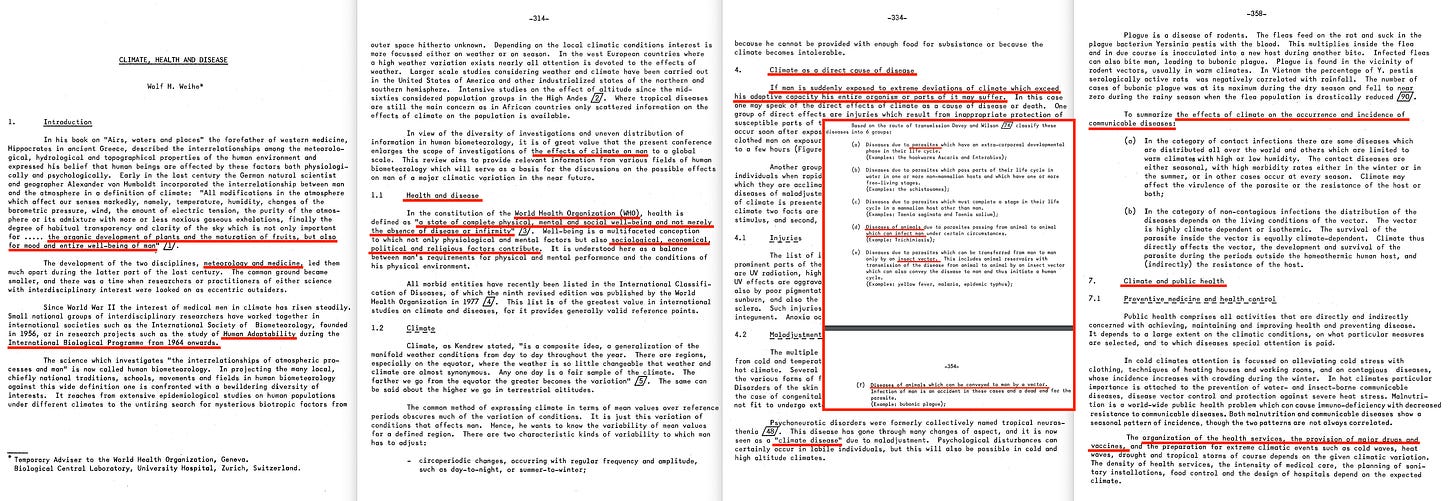






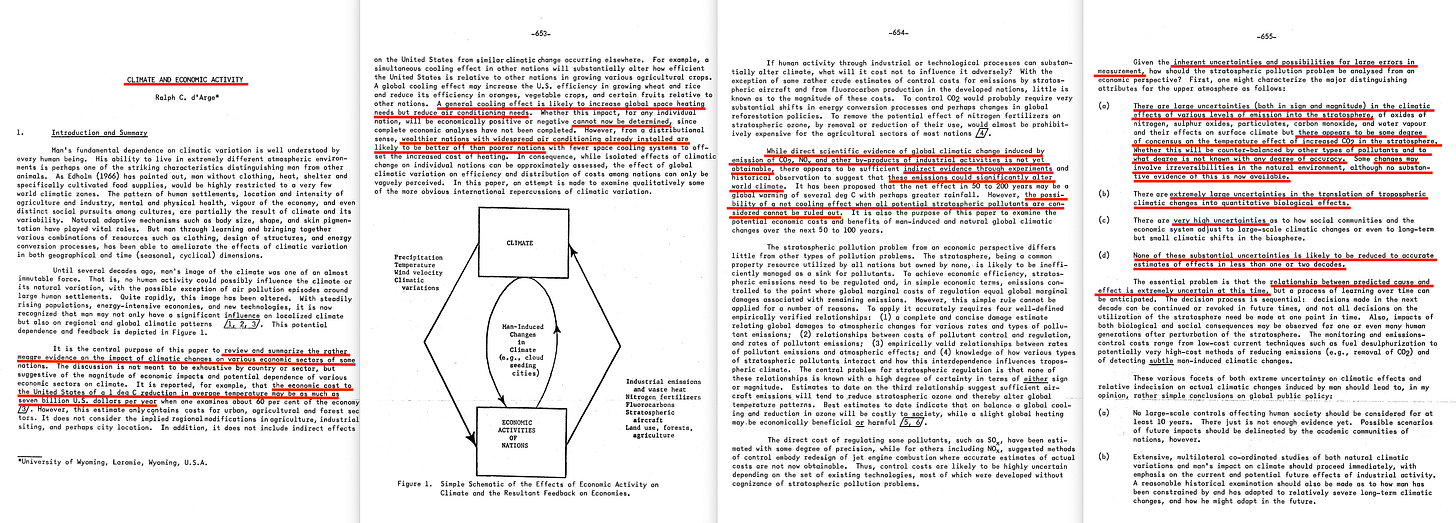









Amazing piece of work.
Now what do we do with such knowledge?